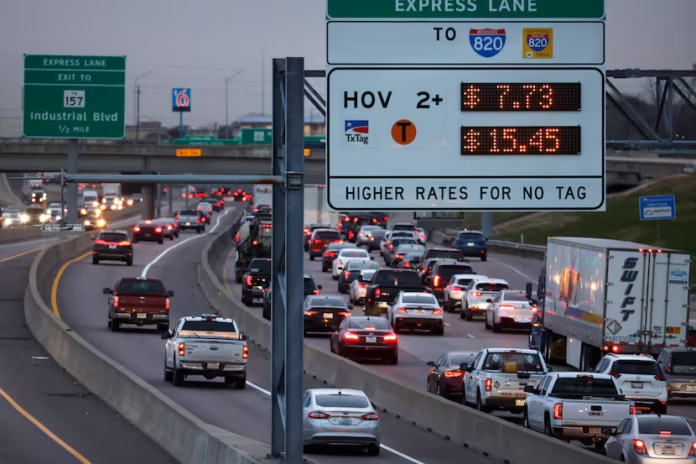Toll road text scams are rapidly increasing across the United States, targeting iPhone and Android users with alarming frequency. Cybersecurity experts have identified over 60,000 scam domains using names like “FastTrak” and other state-run toll systems. These fraudulent messages attempt to trick recipients into paying fake toll fees and revealing sensitive personal information. Despite efforts by Apple and Android to curb these scams, criminals continue to exploit vulnerabilities.
Massive Surge in Toll Scam Texts
Cybersecurity firm Trend Micro reports a staggering 900% increase in toll scam-related searches over the past three months. These fraudulent messages typically claim that unpaid tolls could result in fines or license suspensions, creating a sense of urgency that compels victims to act.
“It’s obviously working; they are getting victims to pay. This scam is lasting much longer than usual,” said Jon Clay, Vice President of Threat Intelligence at Trend Micro. He and other experts attribute the surge to criminal organizations, likely based in China, operating large-scale data centers dedicated to fraud.
How the Toll Scam Works
Victims receive text messages posing as toll collection agencies such as Georgia’s PeachPass, Florida’s Sun Pass, or Texas’s Texas Tag. These messages direct recipients to fake websites designed to collect personal and financial information. While the immediate loss may be a small toll fee, scammers use the stolen data for identity theft, unauthorized transactions, and other fraudulent activities.
Aidan Holland, a senior security researcher at Censys, has tracked thousands of these fraudulent domains. He estimates that criminals have invested approximately $90,000 in bulk domain purchases, underscoring the scale and profitability of the scam.
Why Apple and Android Can’t Stop the Scam
While Apple’s iPhones have security features meant to strip malicious links from messages, scammers continuously evolve their tactics to bypass these defenses. Similarly, Android devices attempt to filter spam texts, but fraudsters counteract this by frequently changing phone numbers.
“Apple has done a great job marketing their devices as secure, and they are—but not against this type of attack,” said Clay.
State Governments Issue Warnings
The scam has reached such prominence that state agencies, including the Ohio Turnpike and Infrastructure Commission, have issued public warnings. Customer service centers are receiving an unprecedented number of calls from concerned individuals who have received suspicious messages.
Louisiana, Vermont, and other states have also alerted residents to the dangers of these scams, urging vigilance and caution.
How to Protect Yourself from Toll Road Scams
- Ignore and Delete: Never respond to unsolicited toll payment requests via text. Simply delete the message.
- Verify Directly: If unsure, visit the official toll road provider’s website or contact customer support to check your account status.
- Do Not Click Links: Clicking fraudulent links can install malware on your device or lead to phishing sites designed to steal your personal information.
- Report Scams: Forward scam texts to 7726 (SPAM) to report them to your mobile carrier.
- Enable Spam Filters: Activate your phone’s spam-blocking features to minimize unwanted messages.
Scammers Prey on Fear and Urgency
Experts warn that these scams are particularly effective because they create a sense of panic, pressuring victims to act immediately. “Scammers want people to panic, not pause,” said Amy Bunn, an online safety advocate at McAfee. She notes that AI-powered tools are making scam messages more sophisticated and convincing.
Even if you recognize a scam, cybersecurity experts advise against replying—even to demand that the sender stop messaging you. “Even a simple ‘stop’ reply confirms to scammers that your number is active, making you a future target,” Bunn added.
As toll scams continue to evolve, awareness is the best defense. Scammers are counting on unsuspecting individuals to act impulsively. By staying informed and cautious, you can avoid falling victim to these increasingly sophisticated schemes. If you receive a toll scam text, remember: Don’t click, don’t reply—just delete and report.




